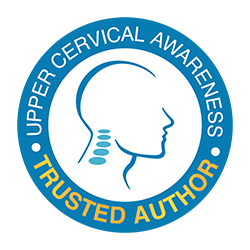Natural Relief for a Pinched Nerve | Upper Cervical Chiropractor in Mount Dora, FL
I’m Dr. Todd at Mount Dora Family Chiropractic. Today I’m going to give you some tips and some exercise for natural relief for a pinched nerve that you can do at home.
Staying Hydrated & Active
Number one, you want to be hydrated. All your joints, discs muscles, they’re largely made of water, and most Americans are chronically dehydrated. So a good rule of thumb is half of your body weight in ounces of water drank. So if you weigh 180 pounds, 90 ounces of water, which is quite a bit and a good amount of water. You don’t want to be sitting all day or in static postures because that just stiffens and loads the spine. So try to stay moving, you know, nothing too intense, go for walks, try to stay active. If you work at a desk, get up every, you know, 20-30 minutes, move around for a couple of minutes, do some stretches and get back to it. So movement, water, hydration, and the third one is cold. So if you have pain, there’s inflammation. Okay inflammation is part of the healing process, but often elicits pain and the inflammation that’s irritating the nerve, is giving you the Radiculopathy down the extremities.
Using Heat & Cold
So cold packs, if your pain is up in the neck area, you want to do 10 to 15 minutes. If it’s your lower back, you can do 20 minutes or so. Okay, now you can alternate hot and cold. Some people tell me how the cold is terrible, and they prefer the heat. With the cold, you’re actually going to be drawing more blood to the area. We actually want to knock the heat down and knock the inflammation down. That’s where your cold comes in. So you can alternate you can start with hot, but end with cold. That’s where you can start. Okay, I’m going to show you a few exercises, particularly for your neck pain and radiculopathy relief. Let me start by saying these exercises are assuming you can do them with relative comfort, you might have some discomfort, but if you’re in acute pain, obviously you might not be able to do these movements. In that case, if it’s that bad, you probably need to be seeking professional help.
The Cat Cow Stretch
Okay, so first exercise is called the “Cat Cow” with a thoracic bias, meaning a mid back bias. Okay, so you’re gonna get kind of on all fours, like so, and you’re gonna lock your lower back down. So you’re really not going to move and keep the palms on the floor. And what you’re going to do is you’re going to arch your back kind of like a cat does when they stretch, right? So you’re going to stretch up, but you’re really moving through that mid back, not the lower back, keep your lower back down. Again, we’re going to stretch out. So that’s the cat and the cow is we’re going to come down and extend. Okay, so I’ll do that again, through that mid back, kind of giving yourself a little hump. And then down and up. Again, you’re doing these two toleration if they’re exacerbating your symptoms, either ease up or stop doing them all together.
The Prone W Stretch
The next exercise we’re going to do is called the “Prone W”. So prone just means laying on your stomach. We’re going to do that with a head lift. Alright, so we’re going to come down like so. You’re going to keep your arms kind of palms down in a W shape. What you’re going to do is you’re going to bring those shoulder blades together, lifting those arms off the floor, and lifting the head up. I’m going to suggest you try to hold for five seconds and then relax. Again, pull and hold and then relax. Alright, so again doing these to what you can tolerate. I would do five sets hold for five seconds. Let’s try to keep it simple to begin with.
The Chin Tuck Exercise
Next we’re going to go to your back and we’re going to do what is known as a “Chin Tuck”. Okay, just as the name implies, you’re going to put your chin down and you’re kind of forcing your spine to flatten out down into the table. That’s going to try to open up some of those nerve spaces. All these exercises we’re doing are to either open up the nerve spaces, or strengthen the stabilizing muscles around the injured area. Alright, so we’re gonna tuck that chin. If you find it more comfortable, you can roll up a small towel to put on your neck. Now if you want to go to a little bit more advanced, you’re gonna tuck the chin and lift and just hold your head rolling and lift, about a half inch to an inch high, holding for five seconds before relaxing. So keep that chin tucked and it’s going to be strengthening all these anterior or front neck muscles.
The Glide Exercise
One more exercise I’m going to show you, we call this one “The Glide”. The idea here is we’re trying to, if you can imagine, think of your nerves going through a sleeve and we’re trying to create better motion for them. This is almost like we’re lubricating the sleeve, so that your nerves can move more freely and put less tension them. So you might want to do this one sitting either at the edge of a chair or edge of your bed. You’re gonna kind of do this, almost like a prayer pose here, you’re gonna start like this with your arms up. I’m going to suggest that you breathe in, and as you exhale, keeping your wrist extended, you’re gonna come up all the way out. And you’re gonna be holding that out as far as you can, you’re kind of opening up. Again, we’re trying to think of lubricating the tunnel for that nerve. Now again, for some of you, this might be really aggravating on the other end of the spectrum. You just do what you can within reason. Again, if you’re finding that these things are just impossible, and there’s too much pain, I would encourage you to seek some professional help. Chiropractic is great for these symptoms!
Schedule your nerve pain relief consultation today!



